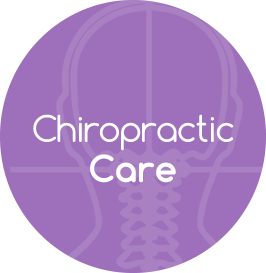Chiropractic Helps Vertigo
A 75-year-old woman came to a Chiropractic clinic suffering from intense vertigo and neck pain after a fall. She described her vertigo as a 10/10 on the pain scale, making daily activities nearly impossible. She also had stiff muscles and pain in the lower back.
The Chiropractor examined her and found structural shifts in her head, neck, mid back, and low back. Restrictions in range of motion were also noted in her neck, mid back, and low back. These structural shifts can lead to obstruction of the nerves and it is this obstruction, called vertebral subluxations, that Chiropractic helps the body resolve.
Following Chiropractic care, she experienced complete resolution of the vertigo and any associated symptomatology.
The study’s author called for additional research to investigate the clinical implications of chiropractic in this population.
Reference: Resolution Following Chiropractic of Benign Paroxysmal Positional Vertigo in an Elderly Female: A Case Report & Review of the Literature. Andrew S. Szatkowski,DC. Annals of Vertebral Subluxation Research ~ Volume, 2024.
Vertigo – FACTS
Vertigo is a condition characterized by the sensation of spinning or moving when there is no actual movement, often causing dizziness and unsteadiness. Vertigo can be triggered by changes in head position, inner ear problems, or neurological issues. Benign paroxysmal positional vertigo (BPPV), a common form, occurs when small calcium crystals in the inner ear become dislodged and affect balance. Episodes of vertigo can last from a few seconds to minutes and may include nausea, vomiting, and difficulty walking.
Symptoms can range from mild dizziness to severe disorientation, and they may include nausea, vomiting, or balance issues. Vertigo is most commonly seen in older adults, but it can affect individuals of all ages.
While vertigo can occur at any age, it is more common in older adults, and its impact on daily life can be severe. Treatments for vertigo include physical maneuvers to reposition ear crystals (like the Epley maneuver), medications, or vestibular rehabilitation therapy. In some cases, vertigo can resolve on its own, but persistent or recurrent symptoms may require intervention.
Chiropractic care may be a treatment option for vertigo, particularly when the condition is associated with cervical spine issues. The nervous system controls and coordinates all functions of the body, including balance, and structural shifts in the spine can obstruct the nerves responsible for these processes. These structural shifts, known as vertebral subluxations, can disrupt nerve signals and contribute to vertigo. Chiropractors work to correct these subluxations, restoring proper alignment and improving nerve function.
Chiropractic adjustments, particularly to the upper cervical spine, have been shown to help alleviate vertigo symptoms by restoring balance and reducing nerve interference. For patients suffering from BPPV or other types of vertigo, chiropractic care offers a non-invasive, drug-free approach that addresses the nervous system’s role in maintaining balance. Regular adjustments can help reduce the intensity and frequency of vertigo episodes, improving quality of life without the side effects associated with medications.


